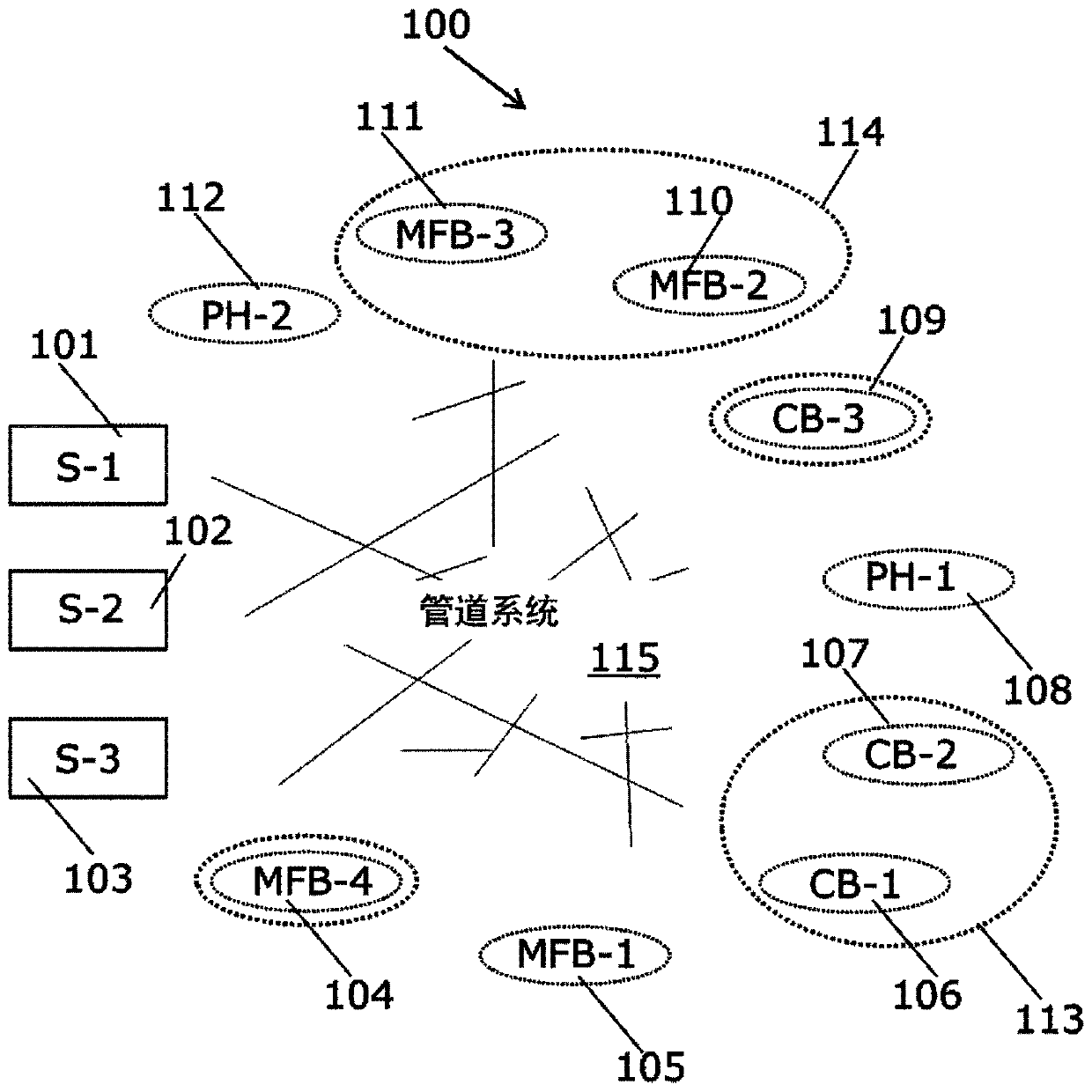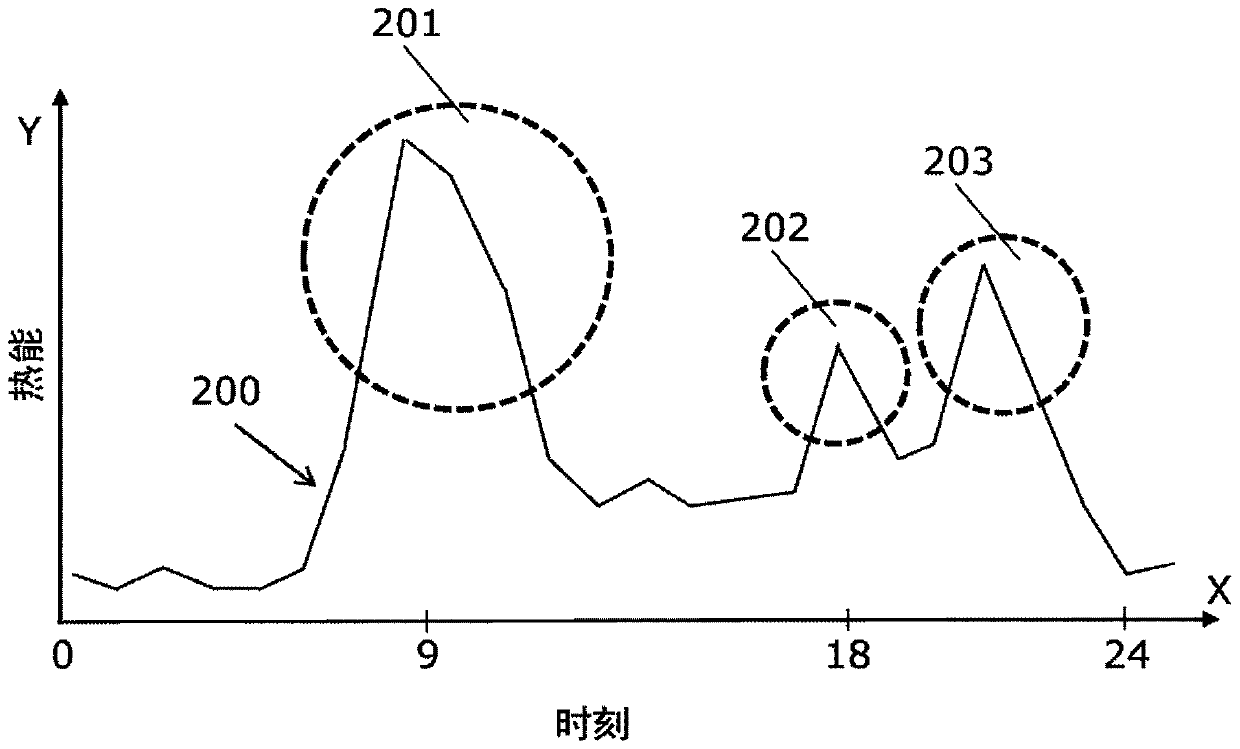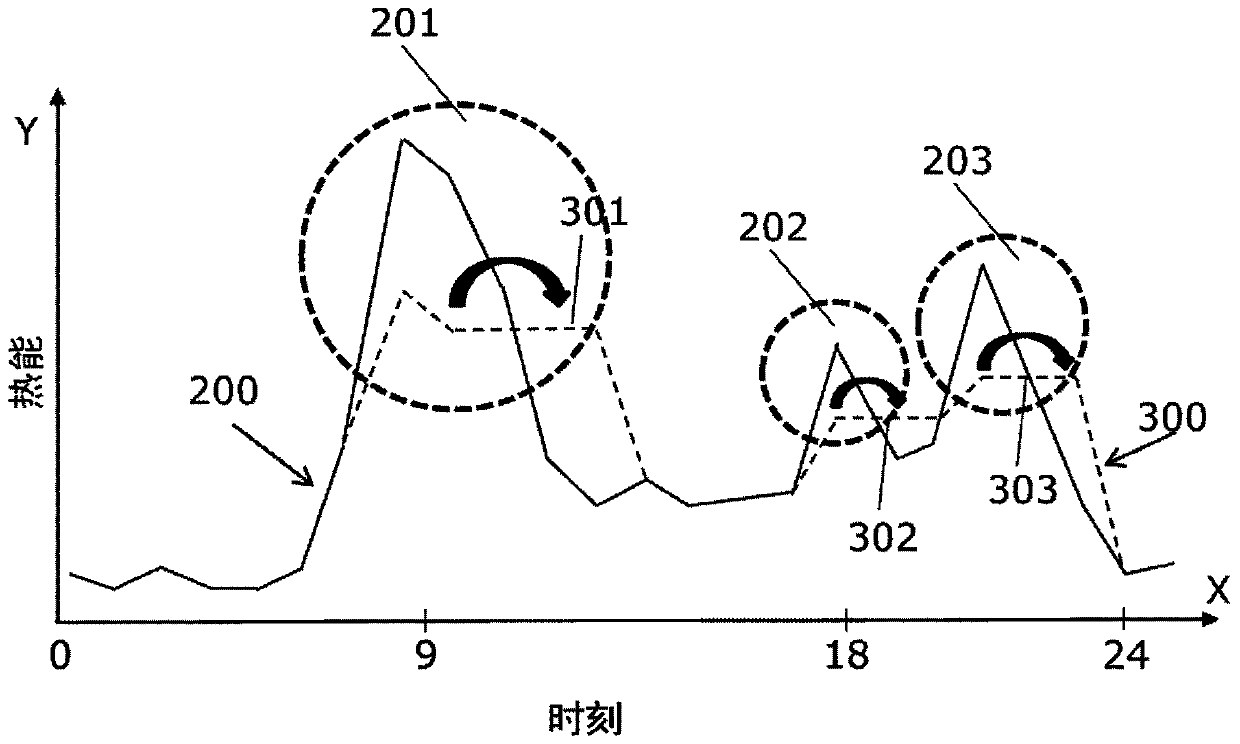Method for controlling energy distribution in heating network
A heat network and heat energy technology, which is applied in household heating, heating methods, household heating, etc., can solve problems such as reducing the efficiency of the heat network
- Summary
- Abstract
- Description
- Claims
- Application Information
AI Technical Summary
Problems solved by technology
Method used
Image
Examples
Embodiment Construction
[0048] figure 1 Shown is a heating network 100 according to an embodiment of the invention, said heating network 100 comprising a supply side and a consumer side. The supply side comprises three supply devices 101, 102, 103 and the consumer side comprises a plurality of consumers 104-112. Some of the consumers are grouped into groups 113, 114 based on their behavior details and energy usage profiles. The supply side and the plurality of consumers 104-112 are interconnected by a piping system 115 which transports thermal energy from the supply devices 101-103 to the consumers 104-112.
[0049] The supply devices 101 - 103 are arranged to supply thermal energy to the heating network 100 , ie to a plurality of consumers 104 - 112 arranged to consume thermal energy from the heating network 100 . Each supply device 101-103 is connected to a piping system 115 which then delivers thermal energy directly to a plurality of consumers 104-112.
[0050] Optionally, the supply devices 1...
PUM
 Login to View More
Login to View More Abstract
Description
Claims
Application Information
 Login to View More
Login to View More - R&D
- Intellectual Property
- Life Sciences
- Materials
- Tech Scout
- Unparalleled Data Quality
- Higher Quality Content
- 60% Fewer Hallucinations
Browse by: Latest US Patents, China's latest patents, Technical Efficacy Thesaurus, Application Domain, Technology Topic, Popular Technical Reports.
© 2025 PatSnap. All rights reserved.Legal|Privacy policy|Modern Slavery Act Transparency Statement|Sitemap|About US| Contact US: help@patsnap.com



